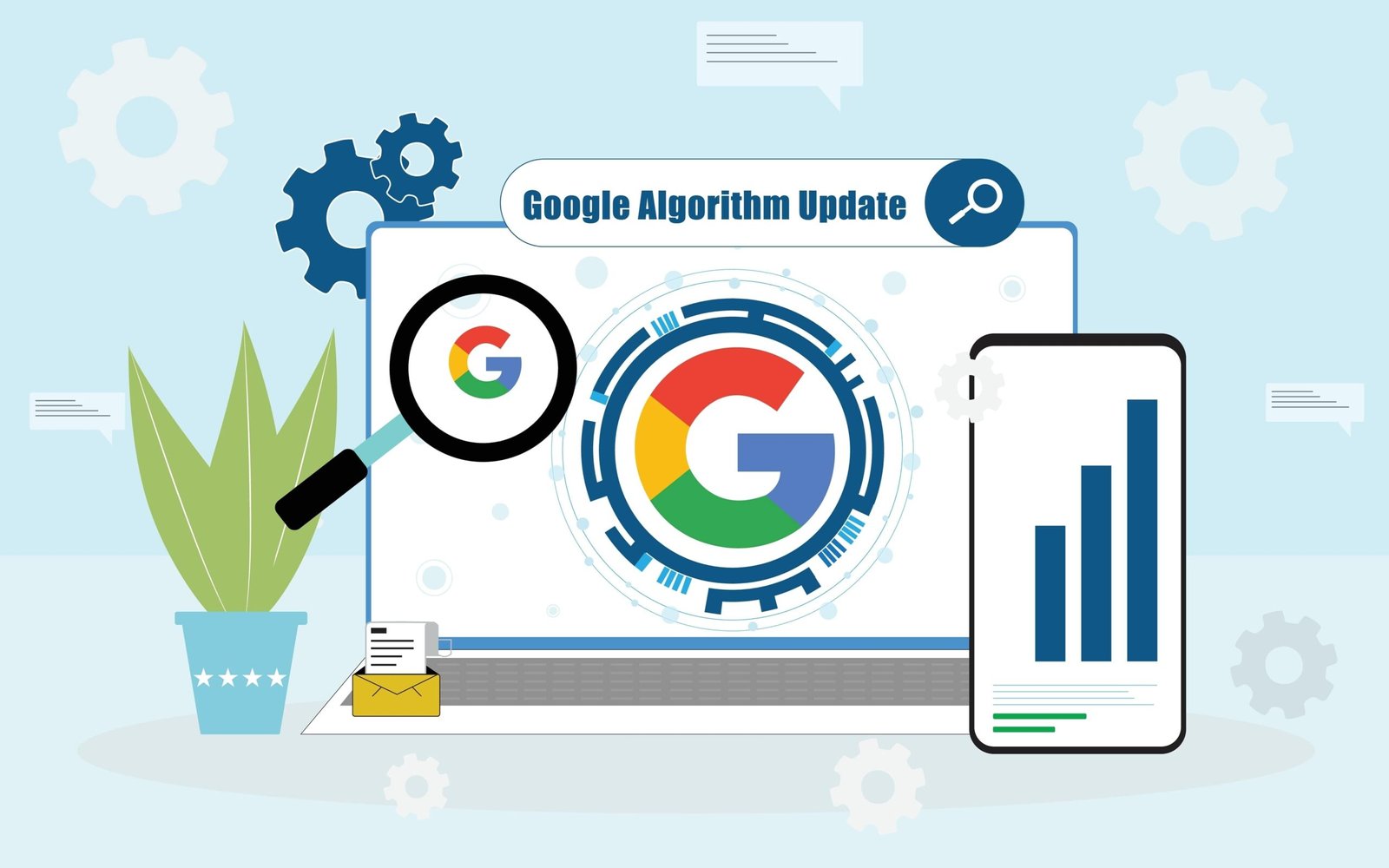In the ever-evolving world of search engine optimization (SEO), webmasters and content creators constantly seek strategies to stand out in search engine results pages (SERPs). While rich results have long been a focal point for enhancing visibility and click-through rates, the landscape is shifting. This article explores the current state of rich results, the enduring importance of schema markup, and practical strategies for leveraging this powerful tool to enhance your website's semantic value and SEO performance.
The Evolution of Rich Results: Navigating the Changing Landscape
Rich results have significantly altered the landscape of search engine results pages (SERPs), providing users with a more dynamic and interactive experience. By implementing structured data, websites can present their content in unique, attention-grabbing formats such as carousels, star ratings, featured snippets, and more. These enhancements improve user engagement and offer a competitive edge in visibility on search engine platforms. However, the journey of rich results has been marked by continual evolution, driven by technological advancements and search engine algorithm shifts. Understanding these changes is crucial for SEO professionals aiming to optimize their strategies in the ever-competitive search environment.
Schema markup, a critical component of SEO, serves as the foundation for generating rich results in search engine results pages (SERPs). By providing search engines with explicit clues about the meaning of a page's content, schema markup enables the display of more informative and visually appealing results for users. This section delves into the intricacies of schema markup, outlining its fundamental principles, its diverse formats, and its pivotal role in enriching web content's visibility and comprehension.
Schema markup is a code (semantic vocabulary) you put on your website to help the search engines return more informative results for users. It acts like a dictionary for search engines, translating the content on a webpage into a language they can understand. This structured data is then used to create rich snippets, which are enhanced search listings that can include elements such as images, ratings, and opening hours.
Schema.org, the collaborative initiative launched by major search engines like Google, Bing, Yahoo, and Yandex, supports various schema types catering to different content categories. Some of the most commonly implemented types include:
The implementation of schema markup significantly impacts SEO and the visibility of web content in several key ways:
Implementing schema markup involves adding specific tags to the HTML of your webpage. These tags describe the page's content in a way search engines can understand. Here are some points to consider during implementation:
While the benefits of schema markup are clear, its implementation comes with challenges. These include keeping up with changes in schema.org vocabulary, ensuring accuracy in the markup, and avoiding penalties for misusing structured data. Best practices involve:
Schema markup is a powerful tool for webmasters aiming to improve their site's search engine visibility and user experience. By accurately implementing and regularly updating structured data, websites can enhance their chances of achieving rich results, thereby driving more traffic and engagement.
Rich results continue to be a key target in SEO strategies, yet their accessibility and impact are evolving due to several key factors:
This shifting landscape is prompting SEO professionals to broaden their focus. Achieving rich results remains important, but there's a growing emphasis on holistic strategies that prioritize user-centric content and overall site quality. Adapting to these changes involves technical SEO adjustments and a commitment to delivering value that meets or exceeds user expectations, regardless of how it's presented in search results.
The quest for rich results in search engine results pages (SERPs) has become more competitive as more websites adopt schema markup. This competition necessitates a shift from mere technical implementation to focusing on content quality, relevance, and user experience.
The evolving landscape of rich results leads to a fundamental shift in SEO priorities. The unpredictability of securing these enhanced listings drives a broader approach to SEO, where the emphasis extends beyond achieving rich results.
In navigating the intricate paths of SEO, where schema markup and rich results play crucial roles, Digitalinear SEO consultancy offers a guiding hand, ensuring your website reaches its full potential in today's competitive environment and connects deeply with your audience. By focusing on crafting meaningful, user-centric content and prioritizing an outstanding user experience, Digitalinear becomes more than just a service provider; we're your committed partner in carving out a successful digital presence.
- The Birth of Rich Results: Rich results originated from the search engines' desire to provide users with more than just a list of links. The introduction of structured data markup, such as org, enabled webmasters to annotate their content, helping search engines understand the context and significance of web pages. This understanding allowed search engines to present information in more useful and interactive formats, significantly enhancing the search experience.
- The Expansion of Rich Results Types: The variety of rich results has expanded dramatically over the years. Initially limited to basic enhancements like rich snippets, which include star ratings for products and recipes, the repertoire has grown to include more complex features such as knowledge graphs, FAQs, how-to guides, and event listings. This expansion reflects the search engine's commitment to providing users with direct, actionable information within SERPs, minimizing the need for additional clicks.
- The Role of Machine Learning and AI: Integrating machine learning and artificial intelligence (AI) into search algorithms has further transformed the potential and precision of rich results. Search engines can now better understand the nuances of web content, predict user intent, and tailor rich results more effectively to meet user needs. This advancement has led to more personalized and contextually relevant search experiences and introduced a layer of complexity for SEO professionals trying to optimize these outcomes.
- Changing Criteria and Opportunities: As search engines have evolved, so too have the criteria for achieving rich results. The reliance on structured data remains constant, but the specifics of how and when rich results are displayed have become more sophisticated. Factors such as content quality, relevance, user engagement metrics, and mobile optimization now significantly determine eligibility for rich results. Additionally, search engines continually experiment with and adjust the appearance and frequency of rich results, affecting how often and in what form they appear.
- The Impact on SEO Strategies: The dynamic nature of rich results necessitates a flexible and informed SEO strategy. SEO professionals must stay abreast of the latest developments and understand how changes in search engine algorithms and rich results criteria can impact visibility. This involves implementing structured data correctly and ensuring that the overall content strategy aligns with quality, relevance, and user experience principles. Moreover, as the competition for these coveted positions in SERPs intensifies, the ability to adapt and innovate becomes increasingly important.
- Looking Ahead: The evolution of rich results is still ongoing. As technology advances and user expectations grow, search engines will continue to refine and expand how they leverage structured data to enhance the search experience. This ongoing transformation presents both challenges and opportunities for SEO professionals. By keeping a pulse on the latest trends and adapting strategies accordingly, they can navigate the changing landscape of rich results and secure a competitive advantage in the digital space.
Understanding Schema Markup: Enhancing Content Visibility and Context
Schema markup, a critical component of SEO, serves as the foundation for generating rich results in search engine results pages (SERPs). By providing search engines with explicit clues about the meaning of a page's content, schema markup enables the display of more informative and visually appealing results for users. This section delves into the intricacies of schema markup, outlining its fundamental principles, its diverse formats, and its pivotal role in enriching web content's visibility and comprehension.
What is Schema Markup?
Schema markup is a code (semantic vocabulary) you put on your website to help the search engines return more informative results for users. It acts like a dictionary for search engines, translating the content on a webpage into a language they can understand. This structured data is then used to create rich snippets, which are enhanced search listings that can include elements such as images, ratings, and opening hours.
Types of Schema Markup
Schema.org, the collaborative initiative launched by major search engines like Google, Bing, Yahoo, and Yandex, supports various schema types catering to different content categories. Some of the most commonly implemented types include:
- Article: Ideal for news and blog posts, helping these pages feature in topical news carousels and certain knowledge panels.
- Local Business: For businesses looking to highlight their location, hours of operation, contact information, and more.
- Event: Enables the listing of upcoming events, including dates, locations, and ticketing information.
- Product and Offer: Useful for e-commerce sites to display pricing and availability and review ratings directly in search results.
- Recipe: Allows for the showcasing of cooking times, ingredient lists, calorie counts, and ratings in search listings.
- Review: For aggregating review scores and displaying them alongside product or service listings in search results.
- FAQ and How-to: For content that provides direct answers to common questions or step-by-step guides, making this information accessible right from the SERPs.
The Role of Schema Markup in SEO
The implementation of schema markup significantly impacts SEO and the visibility of web content in several key ways:
- Enhanced Visibility: By enabling rich results, schema markup makes your listings more eye-catching, potentially increasing click-through rates.
- Improved Relevance: Structured data helps search engines understand the context of your content, making it more likely to be displayed in response to relevant queries.
- Direct Answers: With certain types of schema markup, such as FAQ or How-to, your content could be directly featured in answer boxes or knowledge panels, positioning your site as an authoritative source.
- Voice Search Optimization: As voice search becomes more prevalent, schema markup ensures your content is structured in a way that voice assistants can easily interpret and deliver to users.
Implementing Schema Markup
Implementing schema markup involves adding specific tags to the HTML of your webpage. These tags describe the page's content in a way search engines can understand. Here are some points to consider during implementation:
- Identify Relevant Schema Types: Choose the schema types that best represent the content of your webpage.
- Use Structured Data Testing Tools: Before publishing, use tools provided by search engines to test your structured data for errors.
- Monitor Performance in Search Console: After implementation, use Google Search Console (or equivalent tools) to monitor how your pages perform in SERPs and identify opportunities for improvement.
Challenges and Best Practices
While the benefits of schema markup are clear, its implementation comes with challenges. These include keeping up with changes in schema.org vocabulary, ensuring accuracy in the markup, and avoiding penalties for misusing structured data. Best practices involve:
- Regularly reviewing the guidelines provided by search engines.
- Validating your markup.
- Staying informed about the latest developments in SEO.
Schema markup is a powerful tool for webmasters aiming to improve their site's search engine visibility and user experience. By accurately implementing and regularly updating structured data, websites can enhance their chances of achieving rich results, thereby driving more traffic and engagement.
Navigating the Shifts in Rich Results Visibility
Rich results continue to be a key target in SEO strategies, yet their accessibility and impact are evolving due to several key factors:
- Search Engine Algorithm Updates: Continuous refinements by search engines adjust the display criteria for rich results, requiring websites to adapt their strategies to maintain visibility.
- User Behavior Trends: The rise of mobile and voice searches demands content that meets users' needs for quick, direct answers, influencing the types of rich results that are most effective.
- Increased Competition: As more websites utilize schema markup, the battle for rich result placements intensifies, emphasizing the need for high-quality, relevant content and an optimal user experience.
This shifting landscape is prompting SEO professionals to broaden their focus. Achieving rich results remains important, but there's a growing emphasis on holistic strategies that prioritize user-centric content and overall site quality. Adapting to these changes involves technical SEO adjustments and a commitment to delivering value that meets or exceeds user expectations, regardless of how it's presented in search results.
Rising Competition for Rich Results: A Strategic Shift
The quest for rich results in search engine results pages (SERPs) has become more competitive as more websites adopt schema markup. This competition necessitates a shift from mere technical implementation to focusing on content quality, relevance, and user experience.
- Quality and Relevance: With search engines prioritizing content that best meets users' needs, the emphasis has shifted towards producing high-quality, relevant content. Websites must offer comprehensive, authoritative information that aligns closely with user intent to stand out in the crowded space for rich results.
- Prioritizing User Experience: User experience (UX) is critical to achieving rich results. Mobile responsiveness, page speed, and intuitive navigation are key to enhancing a website's appeal to search engines and users. A superior UX can significantly boost a site's chances of securing enhanced visibility.
- Adaptation and Refinement: Staying competitive for rich results requires continuous adaptation and refinement of SEO strategies. This involves keeping up with algorithm updates, enhancing content quality, and improving site usability. Regular audits and updates ensure a website meets the evolving criteria for rich results.
Refocusing SEO Strategies for Broader Goals
The evolving landscape of rich results leads to a fundamental shift in SEO priorities. The unpredictability of securing these enhanced listings drives a broader approach to SEO, where the emphasis extends beyond achieving rich results.
- Emphasis on Quality and User-Centric Content: Modern SEO strategies are increasingly about crafting high-quality content that centers on the user's needs and interests. This shift acknowledges that while rich results can boost visibility, the ultimate goal is to engage and satisfy users with valuable content. This approach ensures that websites provide substantial, informative content that resonates with their audience, enhancing user engagement and retention.
- Prioritizing the User Experience: Alongside content quality, there's a heightened focus on delivering an exceptional user experience (UX). This includes optimizing website design, navigation, and performance to meet users' expectations for fast, accessible, and mobile-friendly browsing. Recognizing that a superior UX can significantly impact a site's ability to attract and retain visitors, SEO strategies prioritize these elements as key factors in achieving long-term success in SERPs.
- Holistic SEO Approaches: The shift towards more holistic SEO practices reflects an understanding that success in search engines is multifaceted. It's not just about targeting specific outcomes like rich results but about building a robust online presence that excels in content quality, user experience, and technical SEO. This comprehensive approach aims to create a strong foundation that can adapt to changes in search engine algorithms and user behaviours, ensuring sustained visibility and engagement.
A word from Digitalinear
In navigating the intricate paths of SEO, where schema markup and rich results play crucial roles, Digitalinear SEO consultancy offers a guiding hand, ensuring your website reaches its full potential in today's competitive environment and connects deeply with your audience. By focusing on crafting meaningful, user-centric content and prioritizing an outstanding user experience, Digitalinear becomes more than just a service provider; we're your committed partner in carving out a successful digital presence.





